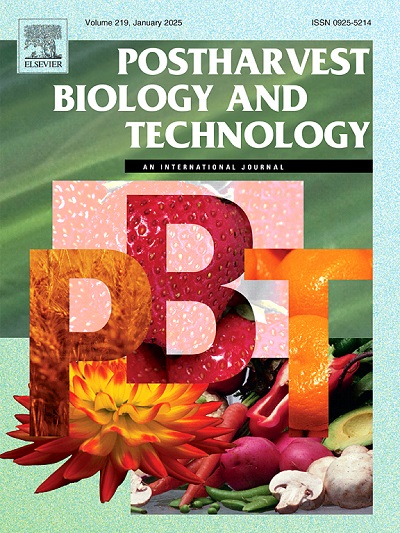VvABF5 promotes ABA-mediated chlorophyll degradation by transcriptional activation of VvSGR during rachis browning of grape
IF 6.4
1区 农林科学
Q1 AGRONOMY
引用次数: 0
Abstract
Rachis browning is a vital problem during postharvest storage of grape, and chlorophyll degradation is a main aspect of rachis browning. Uncovering the molecular mechanisms controlling the rachis browning process is essential to providing high quality grapes to the market. During rachis browning, the content of ABA increased, and treatment with nordihydroguaiaretic acid (NDGA) inhibited while treatment with ABA enhanced this process. A gene encoding a Stay-green protein (VvSGR) was highly expressed during rachis browning, and its overexpression in Arabidopsis and tobacco accelerated chlorophyll degradation, which suggests that VvSGR plays an important role in chlorophyll degradation. Yeast one-hybrid (Y1H), Dual-luciferase (Dual-LUC) and EMSA assays revealed that the transcription factor VvABF5 positively regulated expression of VvSGR by binding to a TCGT sequence in its promoter. Transient overexpression of VvABF5 in grape leaves resulted in a yellow phenotype and chlorophyll degradation. With overexpression of VvABF5, the expression of VvSGR was increased. Collectively, our findings revealed the ABA-responsive VvABF5-VvSGR module that regulates chlorophyll catabolism and the molecular mechanism underpinning rachis browning in grape.
求助全文
约1分钟内获得全文
求助全文
来源期刊

Postharvest Biology and Technology
农林科学-农艺学
CiteScore
12.00
自引率
11.40%
发文量
309
审稿时长
38 days
期刊介绍:
The journal is devoted exclusively to the publication of original papers, review articles and frontiers articles on biological and technological postharvest research. This includes the areas of postharvest storage, treatments and underpinning mechanisms, quality evaluation, packaging, handling and distribution of fresh horticultural crops including fruit, vegetables, flowers and nuts, but excluding grains, seeds and forages.
Papers reporting novel insights from fundamental and interdisciplinary research will be particularly encouraged. These disciplines include systems biology, bioinformatics, entomology, plant physiology, plant pathology, (bio)chemistry, engineering, modelling, and technologies for nondestructive testing.
Manuscripts on fresh food crops that will be further processed after postharvest storage, or on food processes beyond refrigeration, packaging and minimal processing will not be considered.
 求助内容:
求助内容: 应助结果提醒方式:
应助结果提醒方式:


